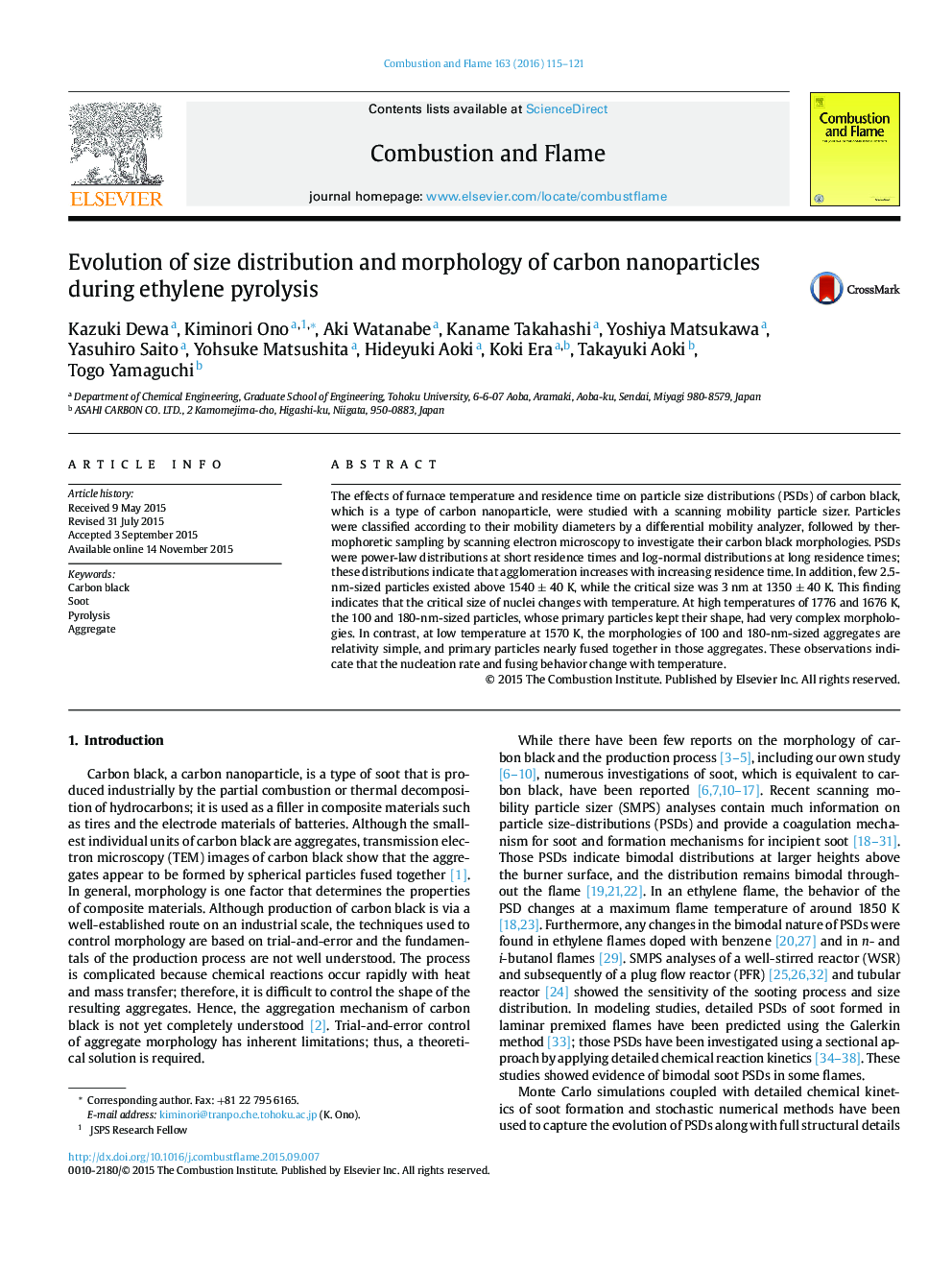| Article ID | Journal | Published Year | Pages | File Type |
|---|---|---|---|---|
| 6594348 | Combustion and Flame | 2016 | 7 Pages |
Abstract
The effects of furnace temperature and residence time on particle size distributions (PSDs) of carbon black, which is a type of carbon nanoparticle, were studied with a scanning mobility particle sizer. Particles were classified according to their mobility diameters by a differential mobility analyzer, followed by thermophoretic sampling by scanning electron microscopy to investigate their carbon black morphologies. PSDs were power-law distributions at short residence times and log-normal distributions at long residence times; these distributions indicate that agglomeration increases with increasing residence time. In addition, few 2.5-nm-sized particles existed above 1540 ± 40 K, while the critical size was 3 nm at 1350 ± 40 K. This finding indicates that the critical size of nuclei changes with temperature. At high temperatures of 1776 and 1676 K, the 100 and 180-nm-sized particles, whose primary particles kept their shape, had very complex morphologies. In contrast, at low temperature at 1570 K, the morphologies of 100 and 180-nm-sized aggregates are relativity simple, and primary particles nearly fused together in those aggregates. These observations indicate that the nucleation rate and fusing behavior change with temperature.
Keywords
Related Topics
Physical Sciences and Engineering
Chemical Engineering
Chemical Engineering (General)
Authors
Kazuki Dewa, Kiminori Ono, Aki Watanabe, Kaname Takahashi, Yoshiya Matsukawa, Yasuhiro Saito, Yohsuke Matsushita, Hideyuki Aoki, Koki Era, Takayuki Aoki, Togo Yamaguchi,
